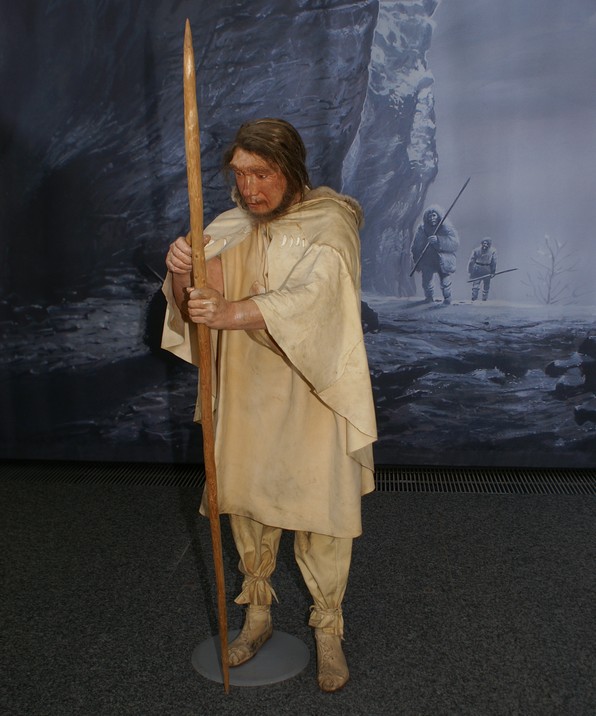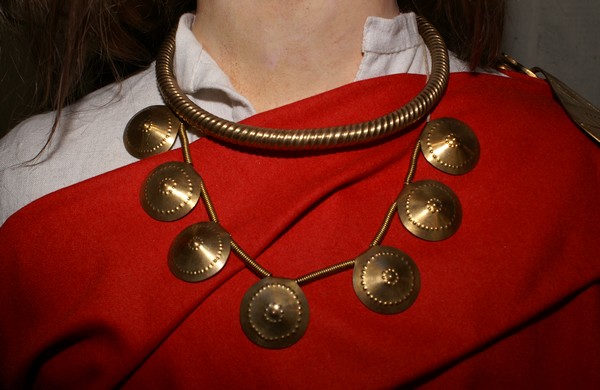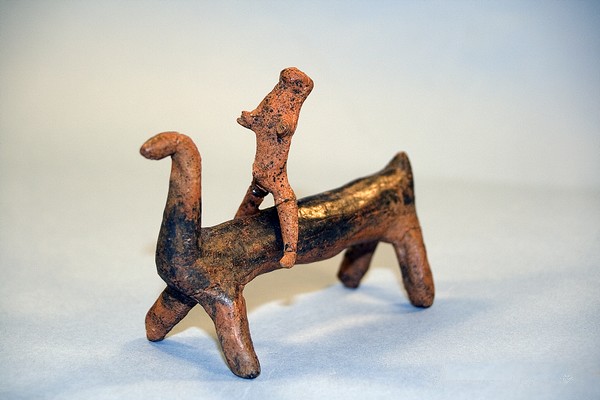 Prehistory100,000 years of human history are reflected in the finds from the region around Nuremberg. We reconstruct prehistoric life with original finds, dioramas and life-size figures, which facilitates the encounter with people from different epochs.
Paleolithic and Mesolithic Age:
The first people in our area lived under harsh climatic conditions during the last Ice Age. They subsisted by gathering wild plants and hunting animals which traversed the open steppes in large herds at that time. The hand ax is the first universal tool of mankind. The exhibition shows the life of the Ice Age hunters on the Franconian Jura and their environment based on the well-known find sites of the Hunas, Hohler Fels and Petershöhle caves. Neolithic Age: With progressive improvement in the climate people began to settle in one place; they build houses, till the fields, raise animals, raise cattle. Numerous inventions such as pottery or the production of sharpened stone tools in the form of axes and hatchets characterize this epoch. The results of an excavation near Landersdorf in southern Central Franconia give an impression of a settlement of the Cham culture from the period around 3,000 BC. 
Bronze Age:
The discovery of new materials and techniques led to a new golden age. Bronze, an alloy of copper and tin glitters like gold and is suitable for fabricating utensils, jewelry and weapons. The sword from Hammer is a perfect example of wide-ranging contacts in the Bronze Age; indeed it has a hilt like a Mycenaean sword but a typical local blade form. An invention of the Bronze Age is the recycling of scrap metal, as documented by the hoard from Henfenfeld and Nuremberg-Mögeldorf. Damaged utensils, weapons and old jewelry were collected and melted down again. The bronze sword from Unterkrumbach was laid down in a spring and probably indicates a cultic act. A special feature here is the use of iron as ornamentation on the hilt. 
Iron Age:
Iron became the most important material of this epoch, which can be put directly into relation to the Celts. The social differences already detectable in the Bronze Age become even more evident. The wealth of an upper class is expressed in magnificent grave goods. Near Gaisheim a man was buried with a sword, wagon and clay vessels for his journey to the afterlife. A reconstruction of the 4-wheeled wagon can be seen. It is one of the most important archeological finds in the collection of the Natural History Society along with the well-known little terracotta equestrian figure from Speikern and the little horse dish from Beckerslohe. The jewelry of the richly adorned woman from Kirchenreinbach with the ring pendants reveals extensive contacts with the Austrian alpine region. Department of society: Prehistory 


|